
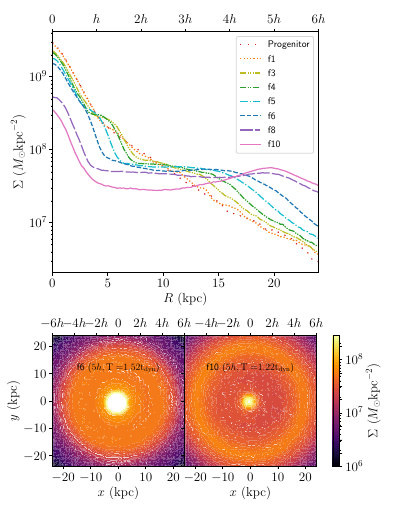
Home Research CV Publications Conferences Students
My research interest:
1. Galaxies collisions in standard dynamics (tools: RAMSES, etc.);
2. N-body simulations to test the external field effect for a galaxy embedded in a background gravitational field (tools: NMODY, RAMSES, NBODY6++);
3. Cooling and equation of state of neutron stars;
4. Kinematics and dynamics of self-consistent numerical models (orbital method, i.e., Schwarzschild method, and particle method, i.e., a made-to-measure method originally proposed by Syer and Tremaine 1995) for stellar systems such as elliptical galaxies;
Current projects:
1. Structures of galaxies formed through interactions of galaxies;
2. The equation of state and thermal evolution of neutron stars;
3. Analysis of cosmological simulated galaxies.
Recent projects:
1. Structures of galaxies formed through interactions, including collisional rings and shells (Chen et al. 2018, Guo et al. 2022, 2024, Ma & Wu 2024):


Left panel: The differential energy distribution of shell galaxies at different times (Guo et al. 2024). Right palel: Rings are hard to propagate to large radii in Milgromian dynamics. A Ring can propagate out to large radii only in a major collision with a large mass ratio betwen the intruder and target galaxies (Ma & Wu 2024).
2. Kinematics of lopsided cluster galaxies (Wu et al. 2017):
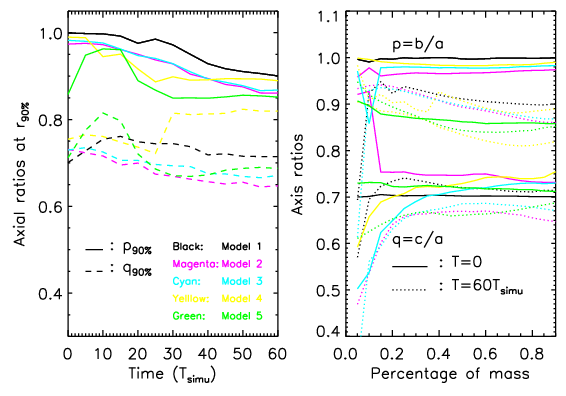
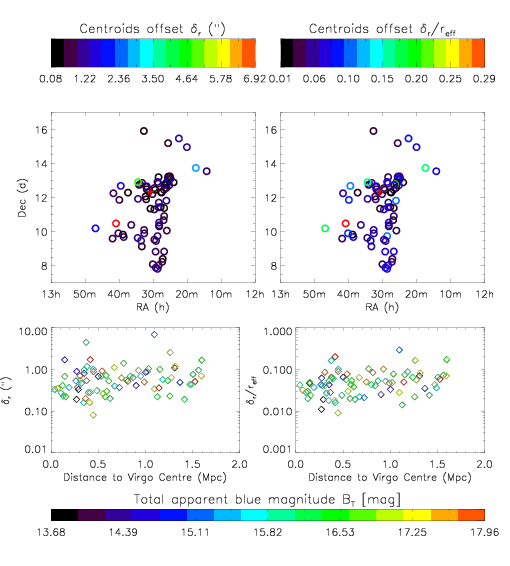
Left panel: Axisymmetric galaxies are not stable in Milgrom's dynamics (MOND). The instability originates from the box orbits and the non-classified orbits with low angular momentum. Right palel: The offsets of nuclei in dwarf elliptical galaxies insided the Virgo cluster. The centroids' offsets are predicted in cluster galaxies in MOND.
3. The mass-discrepancy-to-acceleration (MDA) relation for the observed galaxies an for the cosmological simulated galaxies:
The MDA data emerging in cold/warm dark matter (C/WDM) cosmological simulations disagree significantly with the tight MDA correlation of the observed galaxies, while such correlation is a natural prediction in Milgrom's modified gravity.
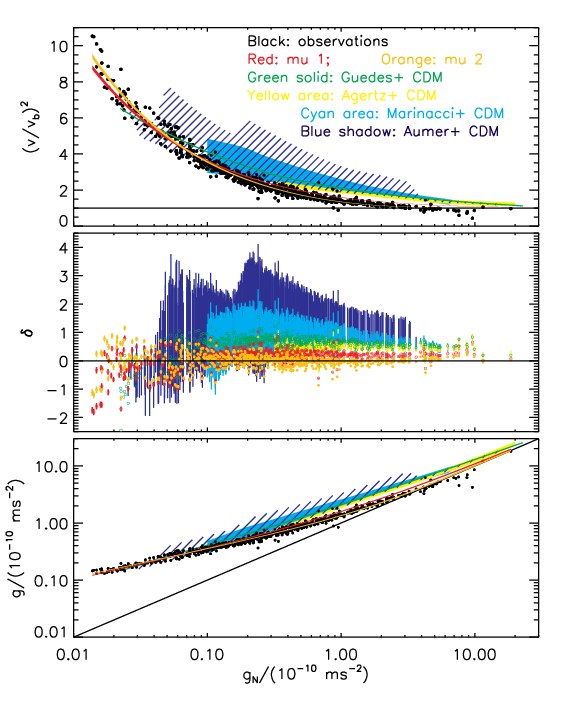
Upper panel: The observed (black dots) and cosmologically simulated (colour areas and green curve) mass discrepancy of galaxies as a function of Newtonian gravity. The red and orange curves show the predictions of mass discrepancy in Milgromian dynamics with different mu functions. Middle panel: The difference of mass discrepancy between observed data and models. Lower panel: Relation between dynamical gravity and Newtonian gravity. (Wu and Kroupa 2015)
4. Shape, mass and angular momentum in ETGs obtained from cosmological simulations (Shen et al. 2024, Wu et al. 2014)
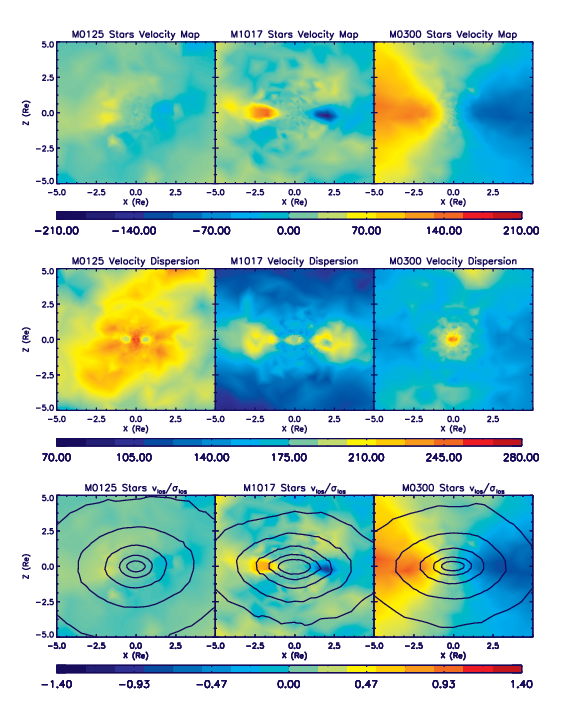
Upper panels:Temporally smoothed mean LOS velocity maps for the stellar components of the same model galaxies. Middle panels: Maps of temporally smoothed velocity dispersion, sigma. Bottom panels: Maps of ratio v/sigma. The surface densities of the stellar components are overplotted on these maps; contour levels are 10^7.0 , 10^7.5, 10^8.0 , 10^8.5 , 10^9.0 Msun kpc^-2 h. The three model galaxies chosen here are: a slow rotator (M0125), a slow rotator with a peak of Lambda(R) around 2 Re (M1017), and a fast rotator with increasing Lambda(R) up to 2 Re (M0300). (Wu et. al. 2014)